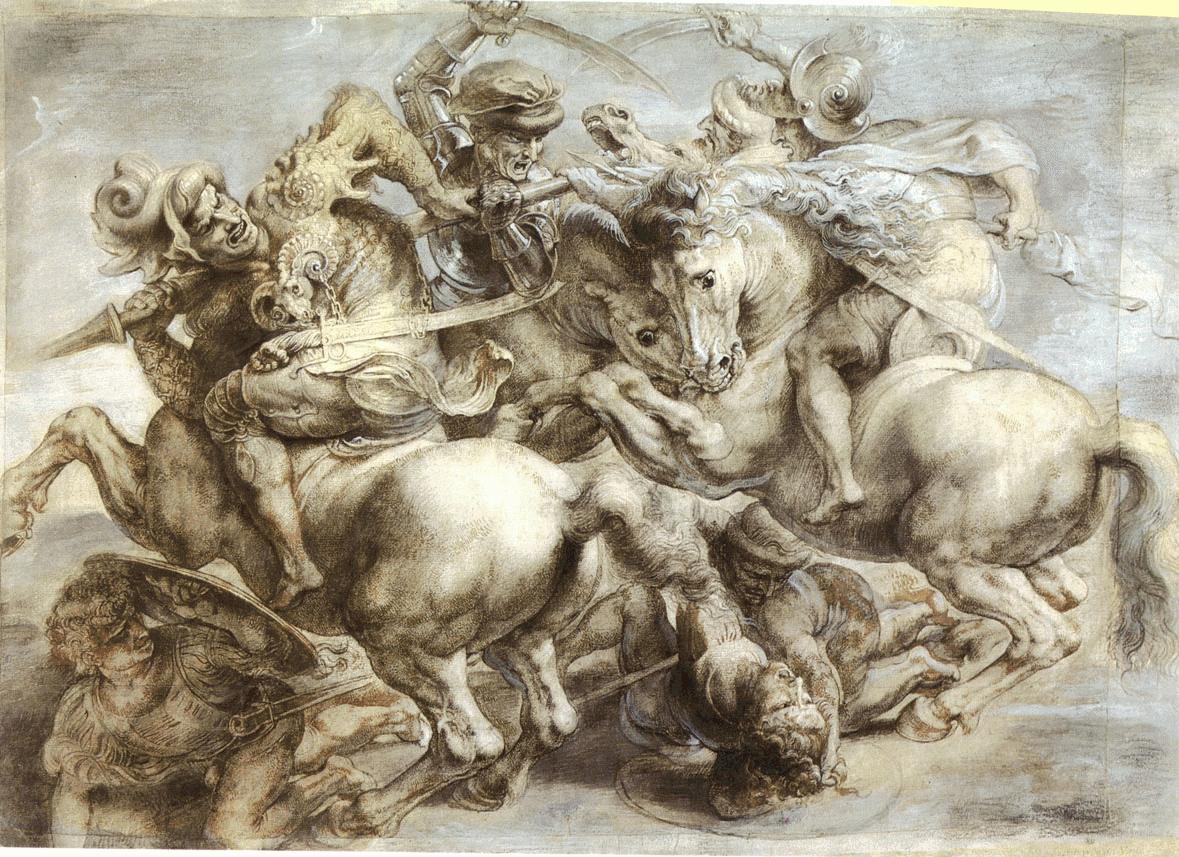The Mindful Mona Lisa: Turbulence and Renormalization

This past week I had occasion to study Ruben's copy of Leonardo’s lost war painting closely for the first time, and noticed its many conflicting, clashing vortices and spirals:
- The two crossing swords at the top
- The two horse heads facing each other, one eye from each
- The shell spiral on the left soldier's shoulder echoing the spiral on his helmet
- The spirals in the right horse's mane
- The two spiral horns of the ram on the left soldier's chest
- The crossing of the two horse's legs in the center
- The right soldier's spiral helmet
- The hands of the left soldier and the center main soldier forming an S shape
- The right soldier grasping both the lance and flag to suggest a “broken” horizon line
This compositional use of knotted, turbulent flows appears often in Leonardo’s works: the lamb's foot crossing Mary's foot in the Virgin and Child with Saint Anne; the crossing sash and geometric embroidery in Salvator Mundi; the crossings and intersections in the Mona Lisa such as her neckline embroidery, her hands and sleeves, and the bridge crossing the river. Intersecting or colliding waves and diagonals also appear in The Last Supper, Madonna of the Yarnwinder, Adoration of the Magi, and Madonna of the Rocks.
This pattern of involuted and multi-scale complexity perhaps derived from Leonardo's deep observation of water and biological life. Could he also have applied this pattern to the larger cosmos and to aspects of the human condition itself?
Leonardo made a number of knot images for his own "academy," the knot (‘nodo’ in Italian, from the same root as “node”) having philosophical and mathematical meaning in Leonardo’s day. Some of these include "Academia Leonardi" with the word "Vici" at the center, which means "won" in Latin and is a pun on his surname "Vinci" (which means "win" in Italian, and "worsted," a type of yarn, in Latin).
A recent article about William Irvine’s study of turbulence, vortices, and helicity states: “other researchers had previously suggested that including these geometric characteristics along with links and knots might provide a more general measure of the complexity and ‘twistiness’ of a vortex — one that might even lead to a new conservation law. Irvine pinned down that new law and proved it…. What’s more, the vortex can untwist itself, twisting the viscous medium around it as it does so.”
An interesting concept to juxtapose to turbulence and knots is that of renormalization. Charlie Wood writes of early quantum field theory in a recent article that “Only by using a technique dubbed ‘renormalization,’ which involved carefully concealing infinite quantities, could researchers sidestep bogus predictions.” Wood also describes recent research which has been able to “link renormalization with the idea of scale. It hinted that quantum physicists had hit on the right answer to the wrong question. Rather than fretting about infinites, they should have focused on connecting tiny with huge.”
Or as Leonardo wrote: "The limiting surface of one thing is the beginning of another."
Next week: Consistency and Resilience
